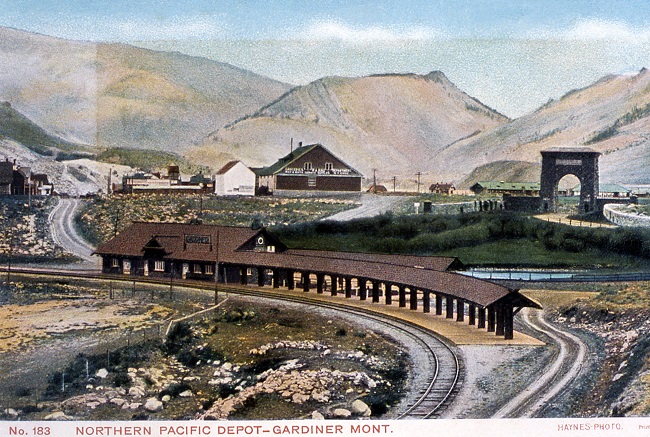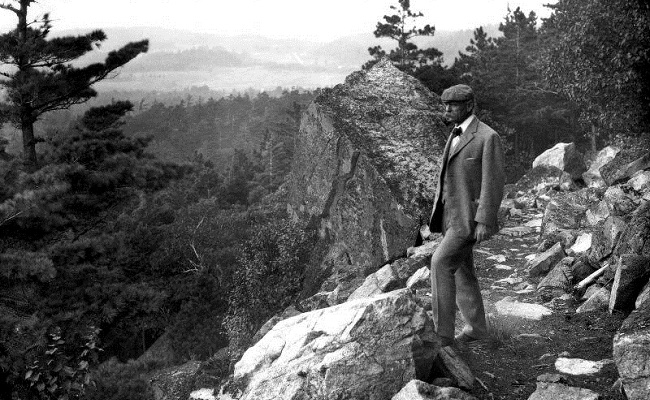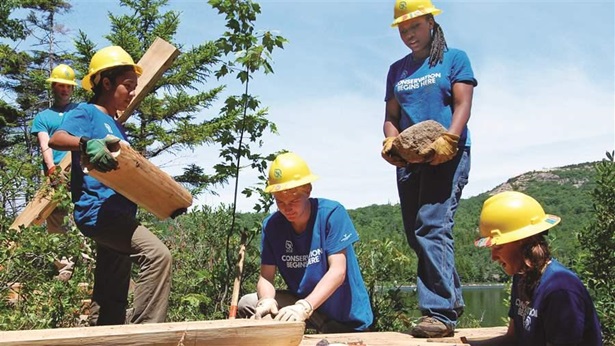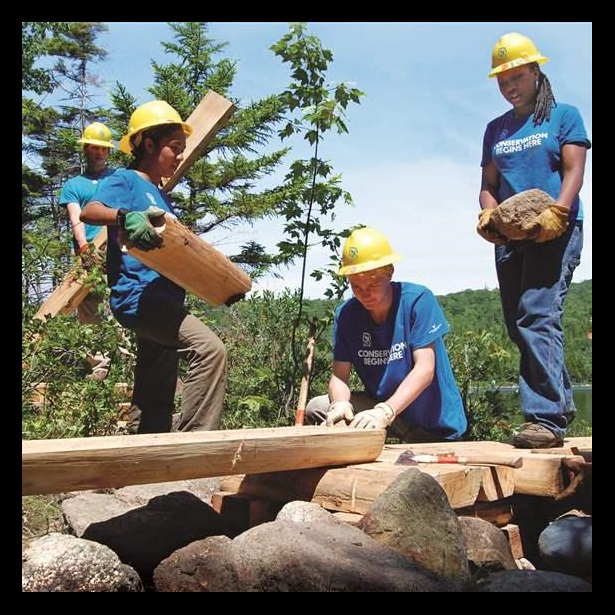Railroad Magnates, Philanthropists Helped Launch Our National Parks
Legacy is continued by partners who help protect and maintain treasured sites
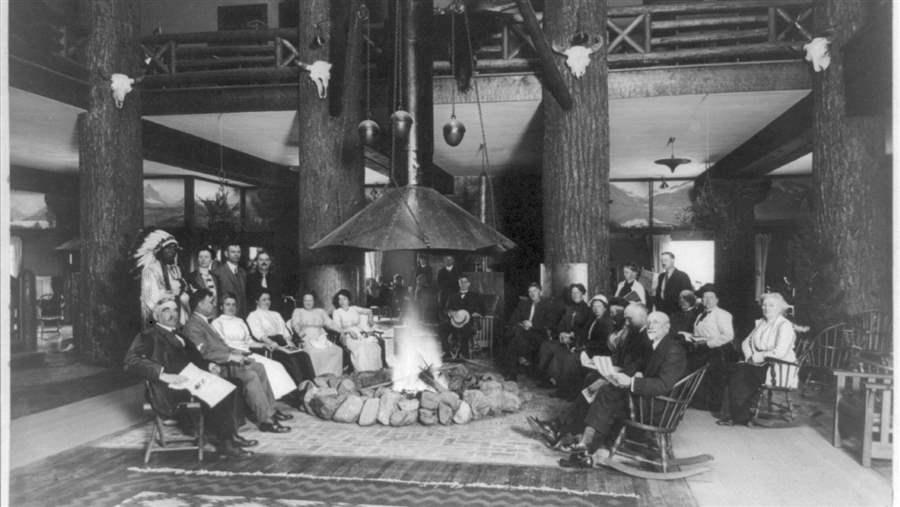
Guests gather in the lobby of the Many Glaciers Hotel, built in 1915 by The Northern Pacific Railway.
© Library of CongressSince the National Park System’s inception, the private sector has helped to build, expand, and protect our nation’s most cherished places. Here’s a look back at some of the public-private partnerships that helped the national parks get their start.
The Railroads
Railroad companies played a critical role in developing, financing, and promoting the national parks during their infancy. Recognizing the potential for tourism, companies such as the Northern Pacific Railway constructed park-bound rail lines and advertised the new destinations to East Coast audiences.
In the early 1800s, Northern Pacific Railroad promoter Jay Cooke financed expeditions to the Yellowstone Valley, on one occasion bringing famed artist Thomas Moran, who was inspired to paint “The Grand Canyon of the Yellowstone.” This sunlit, large-format landscape was later used to garner support for the creation of America’s first national park. After Congress designated Yellowstone, railroad companies advocated for the creation of new national parks, such as Glacier and Grand Canyon, as a way to draw visitors and settlers alike to the West. Within the parks, railroad magnates funded many of the first visitor facilities and park lodges, including Glacier’s Many Glacier Hotel, Grand Canyon’s El Tovar Hotel, and Yellowstone’s Old Faithful Inn, which still stand today.
Philanthropists
Private citizens also helped to establish the National Park System by donating vast amounts of land and funds to the federal government, establishing a tradition of private giving that’s carried on today. Early contributors include Mr. and Mrs. William Kent, who donated the land for Muir Woods National Monument in 1907; George B. Dorr, Charles W. Eliot, and others, for Sieur de Monts National Monument (now Acadia National Park) in 1916; and Stephen T. Mather, the NPS’ first director, for Yosemite’s Tioga Road in 1915.
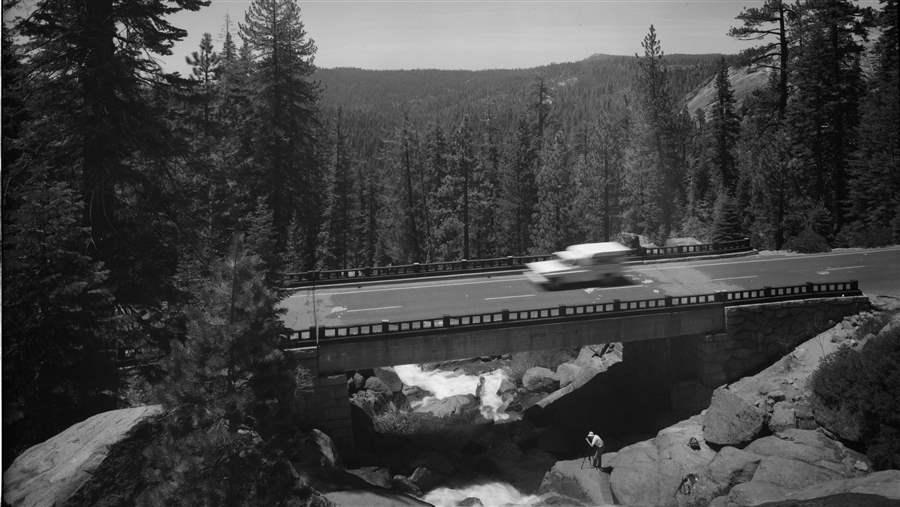
A car drives across the South Fork Tuolumne River Bridge on Tioga road, built in 1937 in Yosemite National Park.
© Brian GroganNonprofit partners
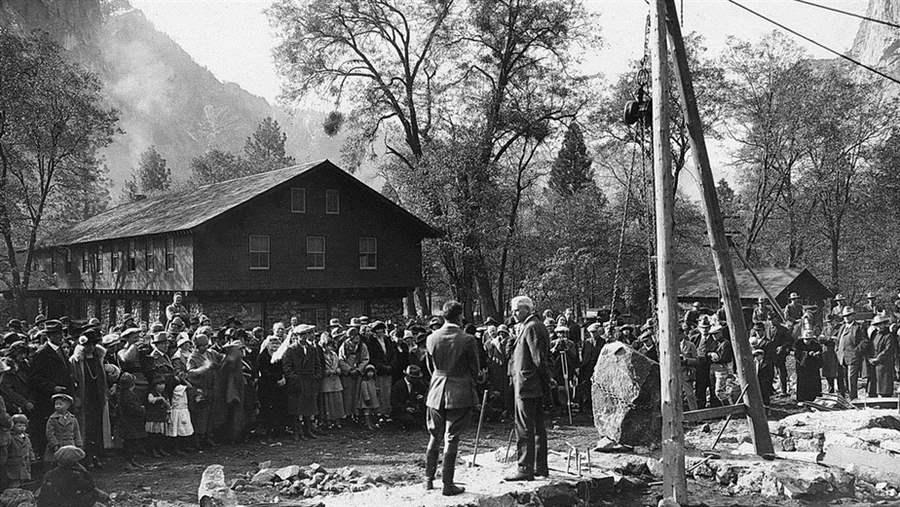
A crowd gathers to watch the laying of the cornerstone for the Yosemite Museum.
© National Park ServiceIn 1923, the Yosemite Museum Association raised funds for the first park museum, which was to be located in Yosemite Valley. The organization served as the NPS’ first nonprofit cooperating association, pioneering a park partner model that has been replicated by over 70 groups in the years since. Congress formally recognized these associations in 1946, and they continue to provide a critical way for parks to funnel private dollars into educational programming and park improvements that are not covered by the federal government.
Continuing the legacy
These original partners established a tradition of private support for the parks that continues today. Throughout the system, there are examples of thriving relationships with volunteer service organizations, philanthropic partners, and private companies. These partnerships range from temporary to decades-long. Many support the parks through the National Park Foundation, created by Congress in 1967 to serve as the NPS’ official charity, while others work directly with the parks themselves. Together, they help protect and maintain hundreds of iconic places throughout all 50 states and most U.S. territories.
Congress is responsible for ensuring that the NPS has the resources it needs to maintain the places and memorials the agency is mandated to protect. Unfortunately, federal funding often falls short of what is needed. While public-private partnerships cannot and should not replace federal funding of park needs, they can help to fill some of the gaps. Over the past 100 years, the generous support of park partners has expanded the NPS’ capacity to welcome and educate visitors, protect resources, and properly maintain more than 400 diverse sites. As the agency moves into its second century, these partnerships will continue to play an important role in sustaining the parks for generations to come.
Join us next week to learn how volunteers helping to restore national parks are gaining new job skills.
Marcia Argust directs The Pew Charitable Trusts’ campaign to restore America’s parks.
